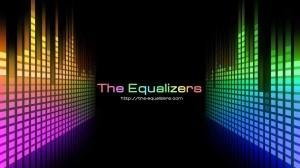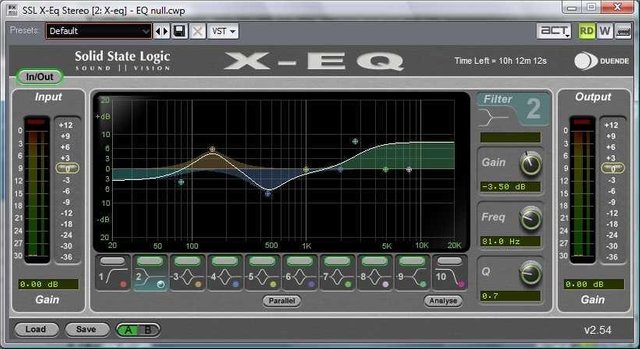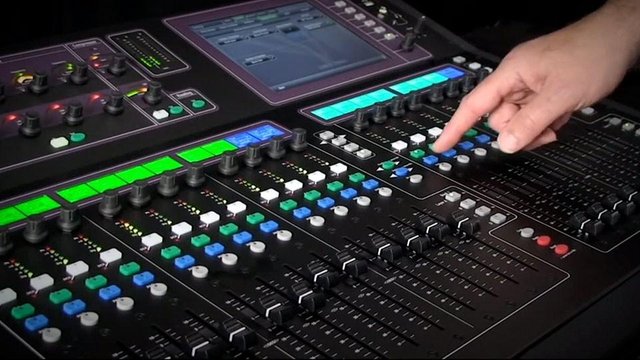The Equalizer [EQ #2]
It's good to be back with our Second Edition of the equalizer. If you missed the First Edition you can check it out at
Today we will be looking at :
. Analogue circuitry
. EQ phasing
. Digital EQ
. Bit-depth and sample-rate
Like always you are free to contribute through comments and also ask questions or drop suggestion as I will be looking forward to learning from you as well.
First up today we are going to take a look at the different types of EQ circuitry that can be used.
we have
** Passive EQ **
** Active EQ **
Passive EQ :
This make use of the passive electronic components like the inductors and capacitors. although theoretically passive EQ can only apply a cut.
How it works
This works by attanuating all frequencies by a certain amount except for the ones which requires boosting which attenuated less. This boost is achieved by a second amplifier which boost all frequency evenly in other to boost the selected frequencies which were not attenuated by the same amount.
The advantage of passive EQ are :
. They have very low noise level
. The give a very pleasant sound.
The major disadvantage of this EQ is
. They are very expensive
. They are larger in size that the active EQ
Active EQ :
This use active electronic components and are capable of creating a boost which is achieved by a feedback loop which turns the selected frequencies back to the amplifier.
Advantages
. They relatively of lower cost (depending on the brand and model).
. They have lighter weight and offers a good boost and cut level.
Disadvantages
The major disadvantage of this EQ is the level of noise created by this active components which are mostly unacceptable.
N/B :
when working digital their are different types of equalizer which can achieve a lot more boost/cut than a traditional analogue EQ can
Digital EQ
digital EQ generate less noise and phase-shift than the analogue, they have a greater precision and also have the benefit of being easily restated .
On the other hand, the point of decusion is that digital EQ sounds a lot cooler but they don't add that extra colouration to the signal like the analogue does.
though over the last decade many factories have greatly improved their algorithms and the quality of EQ plugins including the addition of a saturation and harmonics.
lets take a big lip forward and quickly look at digital audio
Digital audio
we all love working on digital audio or "inside the box" and while recording on digital audio we often run into "bit-depth and sample-rate" and this has a lot to do with the quality of your EQ.
The bit-depth and sample-rate represent the quality of digital audio and they have a large influence on the processing quality of plugins.
now let's take a look at the standard sample-rate that has been used for quality production.
Sample-rate : 44.100 simply called 44.1
Bit-depth : 16 bits
This means that they are 16 available bits to register the amplitude value of a signal.
N/B : Recording you signal at a higher bit rate like 24 bits for example means that we have a greater dynamic range and Thus a bigger headroom to work with while mixing digitally.
The Sample-rate :
this is the rate at which samples are stored. so this basically represents the frequency.
A Sample-rate of 44.1 is capable of registering the half of the frequencies because it has to register at least 2 samples per complete cycle. this also means that it can register the hold frequency spectrum.
work with Sample-rate of 20Hz means that we can only record signals up-to 10kHz.
but working with higher Sample-rate give a more accurate representation of frequencies since it has more samples to store data. This comes handy when processing this audio.
Also they are other processing tasks that benefit from higher Sample-rate like :
. Time stretching
. Reverbs
. Pitch shifters
but it's has a really big advantage when working with the EQ
*N/B. Not all systems or audio interface are capable of running at higher Sample-rate and bit-depth .
This requires a lot more processing power from your computer, especially when you're used to working on lower bit-depth and Sample-rate.
This can probably stop you from recording and mixing as many tracks as you were used to when working on the lower bit-depth and Sample-rate.
#####well that was a little bit off topic today but completely on topic as well. but befor we complete this article let's look at how you can be good at equalizing.
becoming good at EQ
This follows a simple principles which is
knowing the frequency of the instruments your working with.
knowing exactly what you want to achieve.
for me most times when setting up a live mix I offended encounter alot a common "routine-like" situations like The kickdrum interfering with a bass line, vocals and instruments, guitars and baseline etc. and this are instruments with lots of overlapping frequencies.
So I start of by removing some of the frequencies that I don't need and this will definitely clean up the mix.
So cleaning up is the always the first on my list
frequency bands description
20Hz to 60Hz
most recording/sounds can contain these while we don't need them. As this in general create a very "muddy" low end in the mix.
60Hz to 300Hz
This frequency region is were a lot of the fundamental frequencies of turns are. boosting in this region will make it sound very "Boomy" while much cutting in this region can make it sounds very thin.
300Hz to 2.5kHz
This is were you fine the first fundamental and harmonics of most of the instruments and sounds that we work with. So this region deserve a lot of time.
Boosting to much in this frequency region will give that "telephone" or "horn-like" sound which is around 800Hz, while at 400Hz things tern to sound really Boxy.
2.5kHz to 5kHz
the is a lot of clarity. If we boost a little beat around 3kHz we can increase the clarity while too much boosting will make it sound very thin.
5kHz to 7kHz
This region may sound very thin and even annoying at some point. Boosting to much will make it sound really too annoying to listen to.
A little boost in this region will increase the sharpness of a sound while removing Cutting out some of the frequencies in this region will make it sound a little bit Warmer.
7kHz to 20kHz
This is way we have the very high frequencies were the air sound and sharpness is located. you can also fine the clarity of the vocals still in this region. Much cutting will make it sound too compressed and too much boost will also make it sound too sharp.
Summary
- The passive EQ is used to boost selected frequencies not attenuated and also noise cancelling
- The active EQ is used to boost selected frequencies by looping them
- Digital EQs are used mainly for better noise cancellation and phase shifts
- Digital audio, generally, increases the quality of your EQ.
- The frequencies sound distribution for EQs ranges from 20Hz to 20kHz. And are used for different purposes.
That's all about EQ you can try making an audio to check it out and see how it works. You can as well download and listen to tracks by @jerrybanfield, @prc
Your free to ask questions through comments as always.
thanks for reading!!!!
until next time.




Nice post you have got. Steemit is looking for people like you to helping bringing crypto to the door step of new steemians
Am glad you like it. I will try always to give my best
This is really insightful James, and I like that you are able to accurately put your message down making it easy to learn and grab. Keep it up.
Thanks you sir.